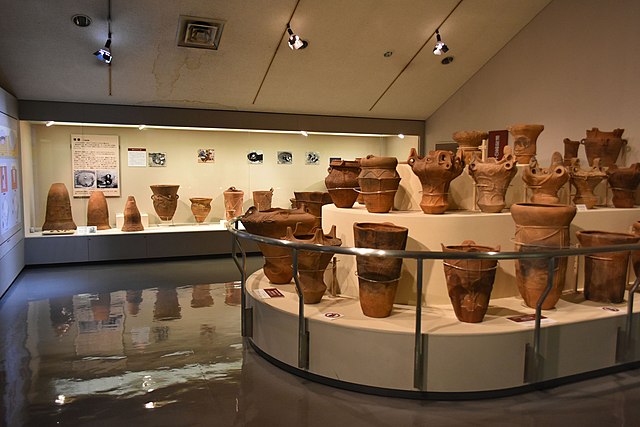In Japanese history, the Jōmon period is the time between c. 14,000 and 300 BC, during which Japan was inhabited by a diverse hunter-gatherer and early agriculturalist population united through a common Jōmon culture, which reached a considerable degree of sedentism and cultural complexity. The name "cord-marked" was first applied by the American zoologist and orientalist Edward S. Morse, who discovered sherds of pottery in 1877 and subsequently translated "straw-rope pattern" into Japanese as Jōmon. The pottery style characteristic of the first phases of Jōmon culture was decorated by impressing cords into the surface of wet clay and is generally accepted to be among the oldest in the world.
Reconstruction of the Sannai-Maruyama Site in the Aomori Prefecture. It shares cultural similarities with settlements of Northeast Asia and the Korean Peninsula, as well as with later Japanese culture.
Incipient Jōmon pottery (14th–8th millennium BC) Tokyo National Museum, Japan
Jōmon pottery in the Yamanashi museum.
Spray style Jōmon pottery
In cultural anthropology, sedentism is the practice of living in one place for a long time. As of 2024, the large majority of people belong to sedentary cultures. In evolutionary anthropology and archaeology, sedentism takes on a slightly different sub-meaning, often applying to the transition from nomadic society to a lifestyle that involves remaining in one place permanently. Essentially, sedentism means living in groups permanently in one place. The invention of agriculture led to sedentism in many cases, but the earliest sedentary settlements were pre-agricultural.
Herd of horses on summer mountain pasture in the Pyrenees
Beja nomads from Northeast Africa






